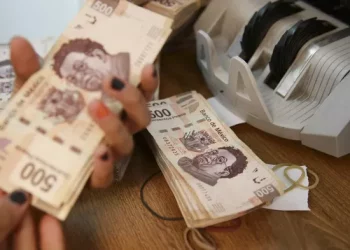In the world of currency and numismatics, the pursuit of history often leads to uncovering fascinating stories behind the bills we use daily. One question that sparks curiosity among collectors and history enthusiasts alike is, “What is the Oldest Dollar Bill?” In this article, we will delve deep into the annals of American monetary history, exploring the intriguing journey of the dollar bill from its humble beginnings to the modern currency we know today.
The Birth of a Nation: The Genesis of the Dollar Bill
1. The Precursor to the Dollar Bill: Continental Congress Notes
Before the dollar bill as we know it came into existence, the Continental Congress issued its own form of paper money in the late 18th century.
These notes, issued between 1775 and 1779, were known as “Continental Congress Notes” and played a crucial role in funding the American Revolution. While they were not true dollar bills, they laid the foundation for the future of American paper currency.
2. The Emergence of the U.S. Dollar Bill: The Silver Certificate of 1862
The first true dollar bill in the United States made its debut in the form of the Silver Certificate of 1862. These certificates were backed by silver reserves and could be exchanged for their face value in silver coins. This marked a significant step toward establishing a standardized paper currency in the United States.
Evolving Designs and Denominations: Dollar Bills Through the Ages
1. The Dollar Bill’s Transformation: The Educational Series (1896)
In the late 19th century, the U.S. Treasury introduced the Educational Series of silver certificates. These bills featured intricate designs and allegorical motifs, including images of history, science, and industry. While the Educational Series was short-lived, it showcased the nation’s commitment to creating visually striking currency.
2. The Modern Dollar Bill: Federal Reserve Notes
The modern dollar bill, as we recognize it today, is primarily represented by Federal Reserve Notes. These notes were first issued in 1914 and have gone through several design changes over the years. From the iconic portraits of George Washington and Abraham Lincoln to intricate anti-counterfeiting measures, dollar bills have evolved to become both a symbol of the nation’s history and a testament to technological advancements in security printing.
Preserving the Past: Collecting and Valuing Old Dollar Bills
1. Collecting Antique Dollar Bills: Rarity and Condition
When it comes to collecting old dollar bills, rarity and condition are paramount. Bills from the early 19th and 20th centuries, especially those with unique features or printing errors, can fetch significant sums at auctions and among collectors. The rarity of a particular bill and its preservation play a crucial role in determining its value.
2. Appraising the Oldest Dollar Bills: A Glimpse into the World of Numismatics
Numismatics, the study of currency, offers insights into the historical and monetary significance of old dollar bills. Appraisers consider factors such as historical context, design intricacy, and the bill’s condition when determining its value. Additionally, collectors often seek out dollar bills with serial numbers, misprints, or unique markings.
3. Preservation Techniques: Protecting the Oldest Dollar Bills
To maintain the integrity and value of old dollar bills, collectors and enthusiasts employ various preservation techniques. These may include storing bills in protective sleeves, avoiding exposure to direct sunlight and extreme temperatures, and handling them with care to prevent damage.
The Oldest Dollar Bill: A Window into America’s Monetary Past
1. Historical Significance: What Can We Learn from the Oldest Dollar Bill?
The oldest dollar bills in existence serve as tangible artifacts of America’s monetary evolution. They offer a glimpse into the economic and political landscape of their respective eras. For example, bills from the Civil War era reflect the financial challenges faced during that time, while early Federal Reserve Notes mirror the nation’s growing confidence in its own currency.
2. Cultural and Educational Value: Dollar Bills as Teaching Tools
Beyond their monetary worth, old dollar bills hold cultural and educational value. They can be used to engage students and history enthusiasts in discussions about American history, economics, and the artistry of currency design. Exploring the evolution of dollar bills can be a captivating way to connect with the past.
Conclusion: Unlocking the Mysteries of the Oldest Dollar Bill
In our quest to uncover the secrets of the oldest dollar bill, we’ve embarked on a journey through American history. From the early days of the Continental Congress Notes to the modern Federal Reserve Notes, each era has left its mark on the design and significance of the dollar bill. While the oldest dollar bill may not be a single, distinct artifact, the historical richness and cultural value of these bills collectively paint a vivid picture of the nation’s monetary past.
Whether you’re a passionate collector, a history buff, or simply someone intrigued by the stories behind the bills in your wallet, the dollar bill’s evolution offers a captivating narrative that continues to unfold with each passing year. So, the next time you hold a dollar bill in your hand, remember that you’re not just holding currency; you’re holding a piece of America’s rich and complex history.
Related Topics:
What is USD/CHF? A Comprehensive Guide to Currency Pair
Understanding USD/JPY: A Comprehensive Guide to the Currency Pair
What is USDMXN: A Comprehensive Overview


























